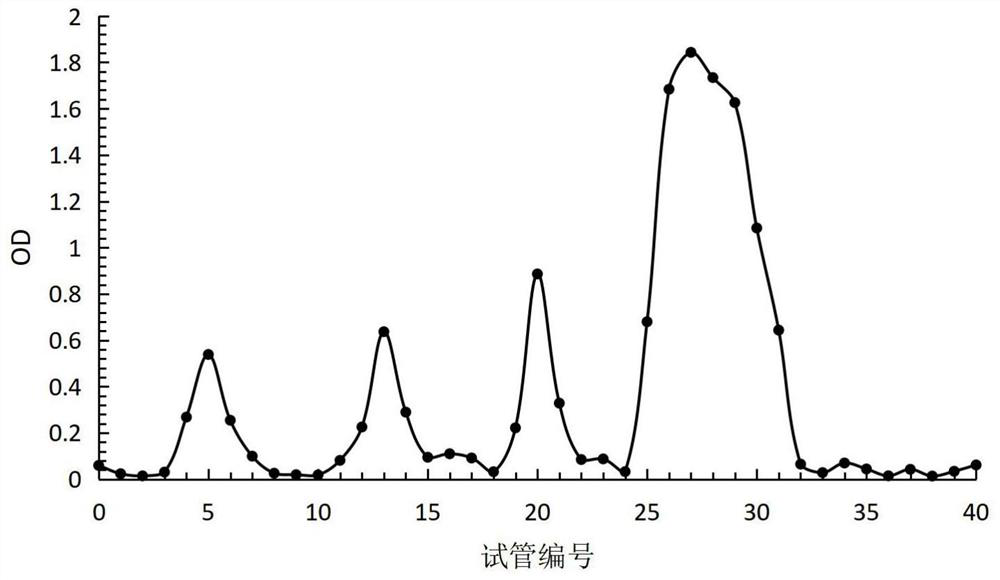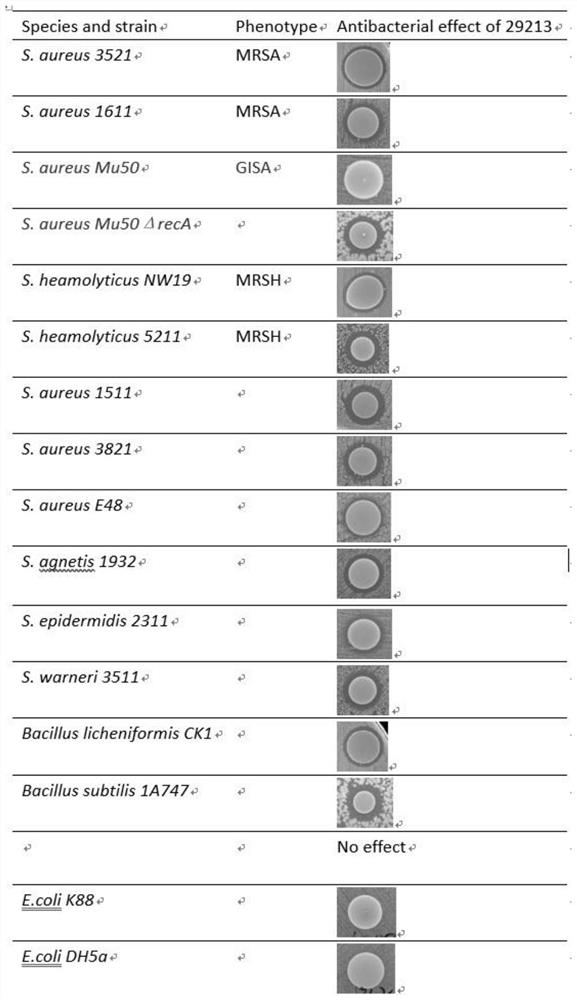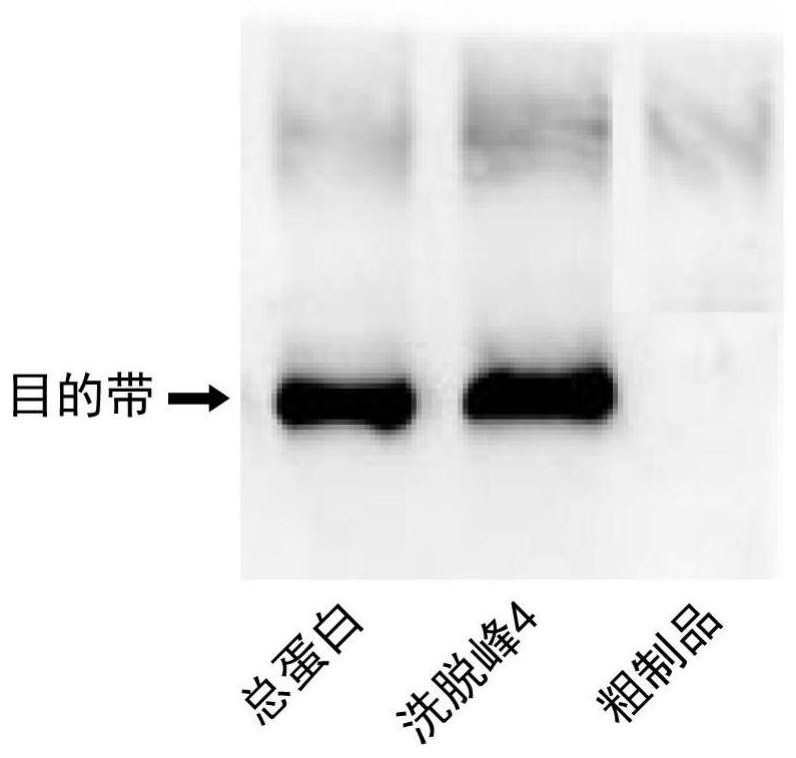Polypeptide compound with broad-spectrum bactericidal activity on gram-positive bacteria
A polypeptide complex, Gram-positive technology, applied in the field of biomedicine, can solve the problems of knowing that the polypeptide complex is killed, and the polypeptide complex does not appear.
- Summary
- Abstract
- Description
- Claims
- Application Information
AI Technical Summary
Problems solved by technology
Method used
Image
Examples
Embodiment 1
[0020] This example provides an extraction, isolation and identification test of a polypeptide complex with broad-spectrum bactericidal activity against Gram-positive bacteria.
[0021] (1) Extraction of polypeptide complex
[0022] Centrifuge the fermentation broth of standard sensitive Staphylococcus aureus (ATCC 29213) at 4800r / min for 20min, take 50mL of the supernatant and place it in a 100mL beaker, and slowly add ammonium sulfate to it successively until the saturation of ammonium sulfate is 80 %, placed in a refrigerator at 4°C overnight, centrifuged at 12000r / min at 4°C for 20min with a high-speed centrifuge, dissolved in 20mmol / LTris-HCl buffer solution (pH7.5) and transferred to a treated dialysis bag, and placed in 20mmol / LTris-HCl buffer dialysis, with BaCl 2 After no precipitation was detected, the liquid was taken out and freeze-dried to measure its activity.
[0023] (2) Separation and purification of polypeptide complexes
[0024] Collect the above liquid a...
Embodiment 2
[0028] This example provides a bactericidal test of a polypeptide complex with broad-spectrum bactericidal activity against Gram-positive bacteria.
[0029] The strains used in the test were standard-sensitive Staphylococcus aureus (ATCC 29213), which produced the polypeptide complex with broad-spectrum bactericidal activity against Gram-positive bacteria in its culture solution. The strains tested included S.aureus 3521, S.aureus 1611, S.aureus Mu50, S.aureus Mu50 ΔrecA, S.heamolyticus NW19, S.heamolyticus 5211, S.aureus 1511, S.aureus 3821, S.aureus E48, S.agnetis 1932, S. epidermidis 2311, S. warneri 3511, Bacilus licheniformis CK1, Bacillus subtilis 1A747, E. coli K88, E. coli DH5a. In the test, standard sensitive Staphylococcus aureus (ATCC 29213) strains and strains to be tested were picked and inoculated into MH broth in sterilized test tubes, cultured overnight at 37°C and 250r / min. Transfer 30 L of the cultured bacterial liquid to 3 mL of fresh MH broth liquid medium...
Embodiment 3
[0035] This example provides a stability test of a polypeptide complex with broad-spectrum bactericidal activity against Gram-positive bacteria.
[0036] (1) Effect of concentration on the bactericidal activity of the polypeptide complex
[0037] Take 1.0 mL of polypeptide complexes with concentrations of 250, 125, 62.5, and 31.25 mg / mL, respectively, and distribute them into 4 centrifuge tubes, using Escherichia coli as the indicator bacteria. The indicator bacteria were inoculated in LB liquid medium and cultured at 37°C for 24 hours. Take 100 μL of the sample solution after filter sterilization, add 30 μL of LB medium and 70 μL of bacterial suspension (the concentration of bacterial suspension is 10 3 ~10 4 CFU / mL), mix well, incubate at 37°C for 1 hour on a shaker at 150 r / min, take 100 μL and pour it on a solid medium plate, culture overnight at 37°C, and count the number of colonies. Deionized water was used as the control group to calculate the antibacterial rate. T...
PUM
 Login to View More
Login to View More Abstract
Description
Claims
Application Information
 Login to View More
Login to View More - R&D
- Intellectual Property
- Life Sciences
- Materials
- Tech Scout
- Unparalleled Data Quality
- Higher Quality Content
- 60% Fewer Hallucinations
Browse by: Latest US Patents, China's latest patents, Technical Efficacy Thesaurus, Application Domain, Technology Topic, Popular Technical Reports.
© 2025 PatSnap. All rights reserved.Legal|Privacy policy|Modern Slavery Act Transparency Statement|Sitemap|About US| Contact US: help@patsnap.com



